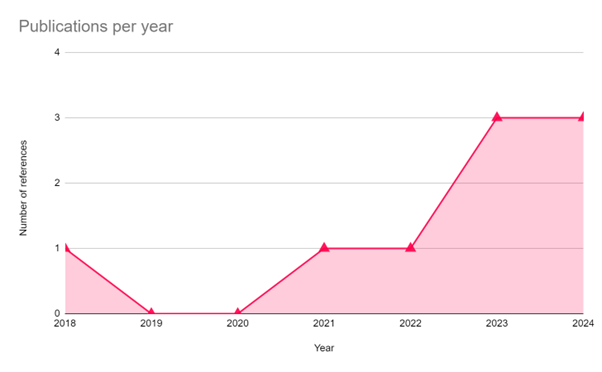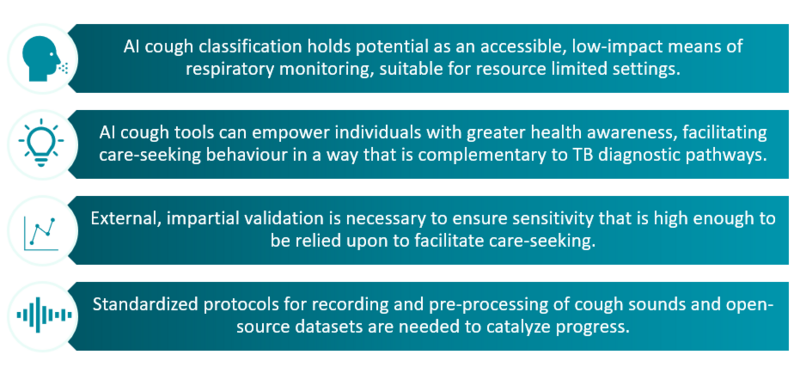Nearly a third of the over 10 million people who fell ill with tuberculosis (TB) in 2022 went undetected. Artificial intelligence (AI) has the potential to help close this detection gap. Prolonged cough (>2 weeks) is a characteristic symptom of pulmonary TB; however, the sensitivity of cough screening is limited as descriptions are subjective, rely on recall, and symptoms are nonspecific.
AI solutions have recently been developed to better harness this acoustic biomarker to aid in cough reporting, initiating health seeking action, and interpretation. To date, two use cases have been explored for TB care:
-
AI-powered monitoring of cough counts as a prediction of TB disease and/or treatment progression
-
AI-powered classification of cough sounds for TB screening



